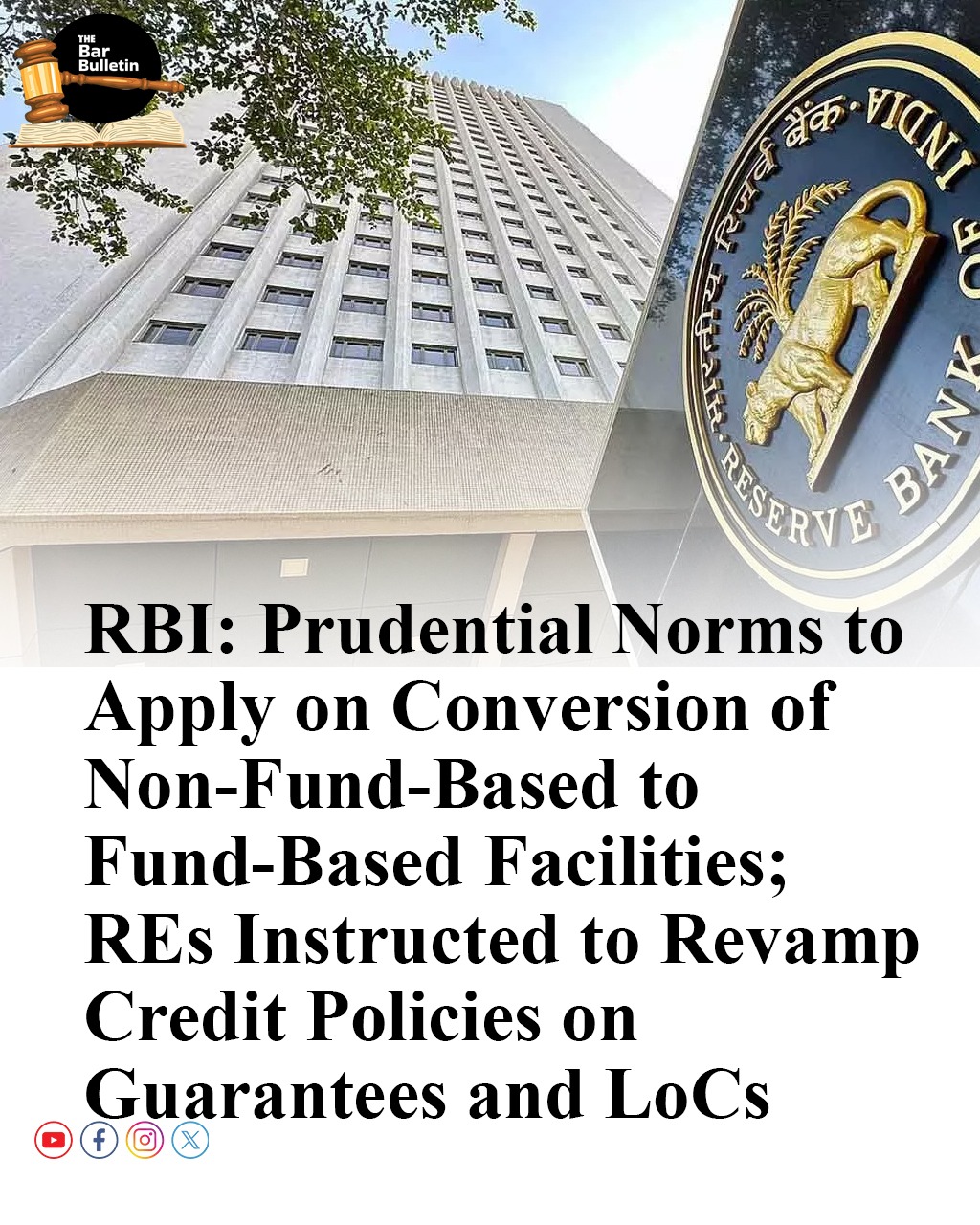The Reserve Bank of India (RBI) vide its Circular dated August 06, 2025, has consolidated the guidelines for the non-fund-based (NFB) facilities like guarantees and letters of credit. These new directions, effective April 01, 2026, shall apply to a broad range of regulated entities, including commercial banks, co-operative banks, All India Financial Institutions (AIFIs), and certain Non-Banking Financial Companies (NBFCs). The rules mandate that any new or renewed NFB facilities after the effective date must comply with these directions, the salient features of which are as follows:
1. The updated directions outline a comprehensive framework for the REs to incorporate in their credit policy for the issue of NFB facilities, covering aspects relating to the type of NFB facilities, limits granted, credit appraisal, security requirements, fraud prevention, overall monitoring mechanism, including post-sanction monitoring, delegation matrix, audit, and internal controls.
2. Additionally, a RE shall not issue an NFB facility to any entity assuring redemption/ repayment of funds raised by any entity via deposits, issuance of bonds, or in any other form, unless specifically permitted under any regulatory guidelines/ directions issued by the RBI. Further, once an NFB facility devolves and is converted into a fund-based facility, then the prudential norms shall be as applicable to fund-based facilities. However, these directions shall not apply to the derivative exposures of a RE.
3. A RE shall put in place suitable internal aggregate/ individual ceilings for issuance of guarantees in general and unsecured guarantees in particular, provided that the total volume of guaranteed obligations of UCBs, RRBs, LABs, StCBs and CCBs outstanding at any time shall not exceed 5% of their total assets as per the previous financial year’s balance sheet. Further, unsecured guarantees of these REs shall be restricted to 1.25% of total assets. Any breach of these stipulations shall be incorporated by the REs by April 01, 2027.
4. Even though REs did not provide a guarantee, favouring another RE to enable it to provide any fund-based credit facility to an obligor, they may provide a guarantee favouring another RE for an NFB facility extended by the latter, which shall be treated as an exposure on the obligor on whose behalf the guarantee has been issued by it, and the exposure of the RE extending credit facility against a guarantee shall be treated as a claim on the RE which is providing the counter guarantee. Additionally, the RE shall honour the guarantee issued by it as and when invoked, as per the guarantee deed, unless there is a court order restraining the same.
5. As regards debt or other liability incurred by an exporter on account of exports from India, the REs permitted as an Authorised Dealer (AD), can issue guarantee to or on behalf of a foreign entity, or any of its step-down subsidiary in which an Indian entity has acquired control through the foreign entity, which is backed by a counter-guarantee or collateral by the Indian entity or its group company. However, they cannot issue guarantees on behalf of stock/ commodity brokers in favour of commodity exchanges in lieu of a security deposit, which is the prerogative of only Scheduled Commercial Banks.
6. The SCBs (excluding RRBs), AIFIs, NBFCs, including HFCs (REs), may provide Partial Credit Enhancement (PCE) to bonds issued by corporates/ special purpose vehicles (SPVs) for funding all types of projects and to bonds issued by Non-deposit taking NBFCs with an asset size of Rs. 1,000 crores and above registered with the RBI (including HFCs). The PCE facilities to the extent drawn shall be treated as an on-balance sheet advance in the balance sheet, and the undrawn facilities would be an off-balance sheet item and reported under ‘Contingent Liability – Others’.
7. In a waterfall mechanism, Credit Enhancement (CE) gets drawn only in a contingent situation of cash flow shortfall for servicing a debt/ bond. Since such an event is indicative of the financial distress of the project, a drawn tranche of the contingent PCE facility shall be required to be repaid within 30 days from the date of its drawdown (due date), and the facility shall be treated as NPA if it remains outstanding for 90 days or more from the due date and provided for as per the usual asset classification and provisioning norms. In that event, the RE’s other facilities to the borrower shall also be classified as NPA.
8. The tenor of the bond issued by NBFCs/ HFCs for which PCE is provided shall not be less than three years, and the proceeds from the bonds backed by PCE from REs shall only be utilised for refinancing the existing debt of the NBFCs/ HFCs. Additionally, the exposure of a RE by way of PCEs to bonds issued by each such NBFC/ HFC shall be restricted to one per cent of the capital funds of the RE within the extant single/ group borrower exposure limits.

